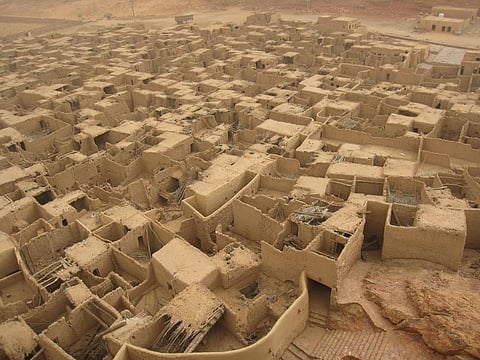
- Home
- न्यूजग्राम
- NewsGram USA
- India
- World
- Politics
- Entertainment
- Culture
- Lifestyle
- Economy
- Sports
- Sp. Coverage
- Misc.
- NewsGram Exclusive
- Jobs / Internships

Saudi Arabia might boast of a potpourri of architectural marvels and grand mosques, men and women dressed in modestly long gowns in the scorching heat of the desert, but going deeper inside the land of 'Sheikhs' might amaze one beyond measure.
Known for its stringent laws and moderated lifestyle, the Kingdom of Saudi Arabia is rich in historical magnificence. Located 110 km southwest of the town of Tayma, surrounded by thick walls and narrow corridors is the ancient capital of Dedanites – Al 'Ula. The old city, representing a maze-like construction has attracted archaeologists and historians for a long time. Al 'Ula, surrounded by Maid –ain Saleh, crowns the desert as the first Saudi World Heritage Site declared by the UNESCO, said a Altasobscura report.
Follow NewsGram on Twitter: @newsgram1
Charles Doughty in 1876, discovered the city while he was travelling with a caravan of travellers on their way to Mecca and Medina. He studied the inscriptions found at the site and came across "Al 'Ula, the chief town of the area."
Further research revealed that the Dedanites were the lords of the land during the 6th and 7th century BC. Nabonidus, the king of Babylonia had once raised a military campaign to the north of Arabia around 552 BC to conquer Tayma, Dedan and Yathrib (the present-day Medina). The Nabateans in 106 AD had lost the region to the Romans who gained the entire kingdom along with Petra.
According to a well known Saudi archaeologist, Abdel Rahman al Ansary, "Al Ula or the ancient site of Al Hijr was the capital of the kingdom of Dedan, one of the principal settlements of Arabia established around the 6th century BCE, and mentioned in the Old Testament and Assyrian inscriptions as DDN."
The complete geography of the region comprised of 'Al Khurayba', 'Al Hijr' and 'Mada-in Saleh', which are ruins of Dedans, and those of the Qurh. While many Europeans surveyed the site, it was only properly brought into light after an expedition by the Institute of Archaeology of the University of London, in 1968.
Follow NewsGram on Facebook: NewsGram
Al 'Ula was once a flourishing city, bustling with life and activity, some 2000 years ago. Concretely built mud-houses and sand structures dotted the beautiful landscape of the oasis in the Arabian desert. Trading of silk, spices, luxury items thrived through this route between the Arabian nation and those in the Gulf, as far as India.
Al Sinya chariot and lion in Al Ula. Image source: saudi-archaeology.com
Once the hub of commerce and industry, Al 'Ula also found mention in Islamic history as a city that the Last Prophet, Muhammad (S.A.W) had crossed in 630 AD en route to the Battle of Tabuk, fought between the Arabs and the Byzantines.
According to atlasobscura, most Arab writers have written accounts on how "in the 13th century with the fall of the Abbasid dynasty, and the spread of unrest throughout the peninsula, Qurh declined and eventually its name was forgotten."
In 'Al-'Ula (Saudi Arabia): A report on a Historical and Archaeological Survey', Abdallah al-Nasif writes how "trade routes changed as dynasties grew and declined over the years." The town, although it remained inhabited till the 1980s, is now decaying despite measures of reconstruction under the Royalty. The last family to live here was in 1983 with the last mosque service in 1985.
The Incense Route which helped in transportation of spices from India, 'lapis lazuli' from Afghanistan, gold from Nubia, myrrh and resins from Saba, now suffers erosion and decay.
In spite of the huge popularity among tourists as a uniquely built Arab town, Al 'Ula today lies in ruins under the brutally hot desert sun. Its' structures that were once a major tourist attraction and its' people who welcomed guests are now disappearing like the town itself.
-prepared by NewsGram team with assistance from Maariyah
ALSO READ:
